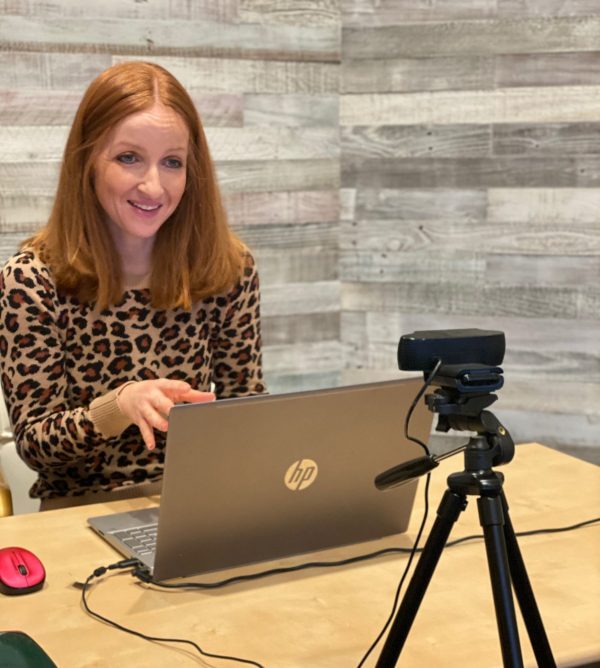When I decided to train in crisis communications, I honestly wasn’t sure if I would ever use it but I was highly interested in learning about it. Fast forward fifteen years, and the training has paid off in many ways. Even the smallest organizations are affected by crises– sudden deaths of people important to communities and organizations, acts of God, large workplace accidents, the list goes on. I’ve now used my training at least a dozen times.
Today, as we forge through the threat of COVID-19, the disease caused by the novel Coronavirus, my training has served me well yet again. Not a single one of my clients ISN’T affected by this crisis. While my recommendations to each have been personalized and varied, they follow two general crisis communications principles: 1) Make a plan. 2) Communicate the heck out of that plan. The problem that most organizations have is that they don’t have a complete plan before they start communication, leading to partial information which only increases fear and chaos. In this entry, I will be helping you make a plan by teaching you how to host effective Zoom meetings.
For many of my clients, part of making an effective organizational crisis plan has involved hosting remote meetings, often at last-minute notice as the Coronavirus situation evolves. As a business owner who runs an entire coaching program virtually on Zoom, I’ve learned a few things about how to make virtual meetings effective and I’ve summarized them into simple points below. Please note, I am not an affiliate of Zoom. I, like many, just feel the need to help my fellow human beings through this unprecedented situation in ways that I can. Teaching you the basics of Zoom is one way I can help.
Purchasing Zoom.
Zoom has several plan levels and fancy add-ons like rooms, storage capacity, and more on its website, Zoom.us. For most people, I recommend the “pro” plan. With this plan, you can have up to 100 participants on one call, and the meeting duration can last up to 24 hours. If you need to host more than 100 people on one call, then the “business” plan is for you. Once you choose your plan, click “buy now” and follow the steps.
people, I recommend the “pro” plan. With this plan, you can have up to 100 participants on one call, and the meeting duration can last up to 24 hours. If you need to host more than 100 people on one call, then the “business” plan is for you. Once you choose your plan, click “buy now” and follow the steps.
Using Zoom.
Zoom is pretty straightforward when used for its basic function—group meetings—which is the focus of this tutorial. Once you’ve purchased Zoom, you’ll be prompted to set up a brief profile with things like your time zone so that Zoom knows how to host your call. You’ll also set up a username and password. Once you’re finished with these steps, you should see a menu item called “schedule a meeting” along the top of your screen. From there, you simply title your meeting, choose the time, copy the invitation, and send it out to attendees.
Note: Most computers come with web cameras. You do NOT need an external one like you see me pictured with to host a great Zoom call. It’s simply adds a bit of clarity and is completely optional. One pro tip I will suggest, though, is that you put some books under your laptop so that your web camera records you straight on, versus under the chin.
Making Zoom Effective.
Using Zoom isn’t nearly as complicated as making Zoom EFFECTIVE. It’s true that nothing is as effective as in-person communication. In fact, I spend most of my working hours figuring out how to come as close to simulating the feel of in-person communication across various digital and traditional marketing mediums because it is so effective. Here are some ways to make Zoom feel as personal as possible:
First, send out an agenda and ask for questions ahead of time. I know it sounds strange to ask for questions before a meeting even happens, but the truth is, people have their own agendas before they even enter a meeting or a training session. Being on Zoom does not change this. By getting a chance to see those personal agendas ahead of time, you can make your own agenda even better. By making your own agenda more personalized in this way, you naturally engage people on your call. This solves some of the “impersonal” feeling that a Zoom call can have (and that an in-person meeting can have, too)!
Second, if your meeting is small enough (and in most cases it is), host a live Q & A by asking folks to use the chat box. Even if you can only pick a few questions, you’ve still encouraged people to be engaged and think about the content. If time allows, consider hosting a quick round table where participants let other participants know their biggest takeaways from the meeting.
Third, ask people how they are feeling. Life feels downright weird to most people right now. If you jump into the content before you address the fear and uncertainty that is going around right now, your chances of an engaged audience plummet. Even when there’s not a crisis, it’s a good practice to start remote meetings by asking people how they are doing. Many people see this chit chat as a waste of time, but in an online setting especially, it helps clear away distractions. Sometimes you just need someone to know that you have a headache before you can truly focus, ya know? Give people space to offload their feelings and you will always benefit. If your meeting is large, ask them to use the chat box and acknowledge common responses.
Breakout sessions. Lastly, some of you may be in the midst of cancelling in-person conferences right now, which feels devastating both from a financial and an enrichment perspective. I know it seems like conferences cannot be replicated on Zoom, but I recently did an experiment and assigned break-out session calls to clients in my coaching group by giving them each call-in links at times they had agreed upon. Each group then picked a leader and when we discussed the breakout sessions on our regular group call, the leaders discussed their team’s solutions. Sound familiar? I would even venture to say it was just as good as it would have been in person.
Bottom line:
Work is going to feel different for a while. As scary, frustrating and financially devastating as this feels, it can also feel empowering. What if this crisis leads to you finally figure out how to do online ordering and shipping? What if it leads to more employee satisfaction because working remotely becomes a viable option? What if it leads to you working out a delivery system for takeout or even figuring out a catering program while in-person dining is down? What if it leads you to figure out how to tutor or train someone online and expand your reach?
As we all strive to keep each other safe, there is a lot that seems impossible right now. But what about all the possibilities?
With that, I wish you good health and I hope that we can all come together and defeat this pandemic by taking small (or even big and scary) prevention steps in our organizations.











Thank you for this Vanessa! You are right that work and life is going to feel different for a while and it is good to know there are tools to try and mitigate some of that!
Thanks for this. Straightforward, good tips and helpful.
I truly appreciate your insights into this new way of relating to my clients and community.